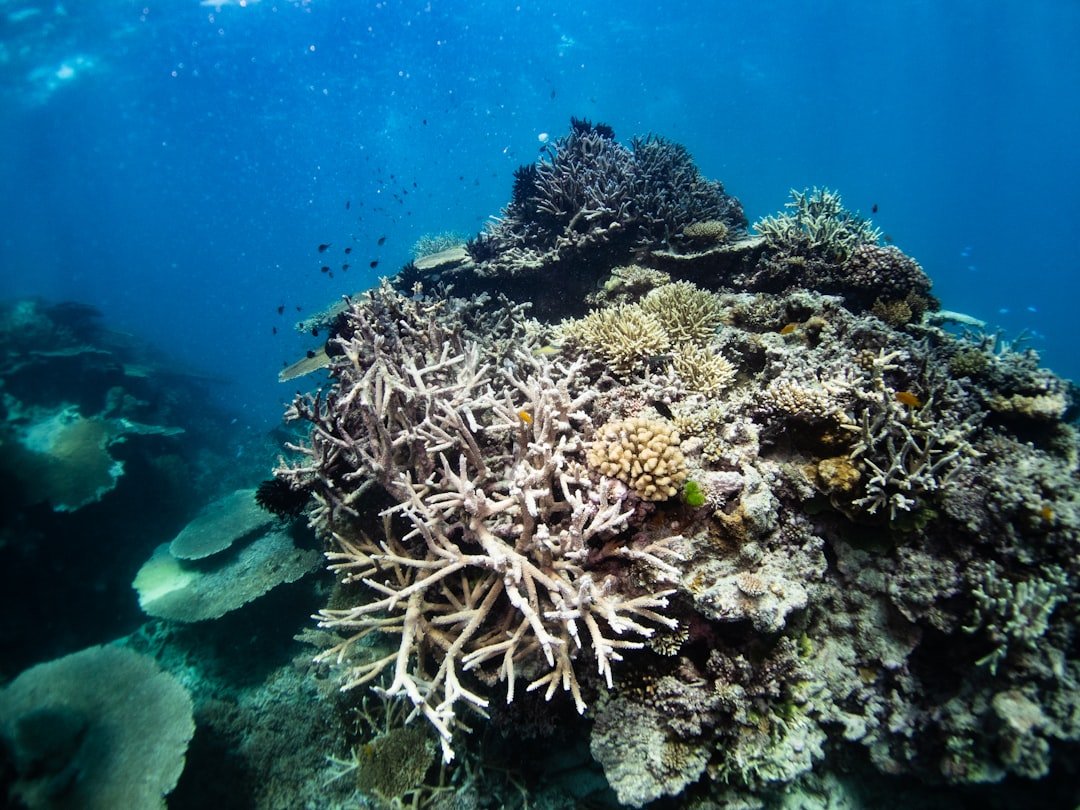An Increasing Concern: Toxic Chemicals in the Ocean The oceans, which make up more than 70% of the earth’s surface, are essential to both human survival and the planet’s health. They provide food, control the climate, and house innumerable species. However, human health and marine ecosystems are seriously threatened by the growing concentration of hazardous chemicals in these enormous waters. Numerous routes have allowed toxic chemicals, such as pesticides, heavy metals, and industrial pollutants, to enter the ocean, with dire repercussions for marine life and the communities that rely on these waters. The oceans have turned into a landfill for pollutants and waste as a result of increased urbanization and industrialization.
Key Takeaways
- Toxic chemicals in the ocean pose a significant threat to marine life and human health.
- Sources of toxic chemicals include industrial discharges, agricultural runoff, and marine debris.
- Toxic chemicals can disrupt marine ecosystems, harm marine species, and bioaccumulate in the food chain.
- Human health can be impacted through consumption of contaminated seafood and exposure to polluted coastal areas.
- Efforts to address toxic chemicals include international agreements, regulations, and research on alternative, less harmful substances.
In addition to upsetting the delicate balance of ocean ecosystems, the introduction of toxic substances into marine environments raises questions regarding the safety of seafood that humans eat. Given the long-term effects of ongoing chemical pollution in the oceans, scientists and environmentalists are warning of the need to address this issue now more than ever. It is crucial to comprehend the causes, consequences, and possible remedies of this issue in order to protect marine life & guarantee a healthy future for all people.
Runoff from industry is a major culprit. Industrial runoff, which includes waste from factories and manufacturing plants, is one of the main causes of ocean pollution. These facilities frequently release wastewater into rivers and streams, which eventually empty into the ocean, either untreated or insufficiently treated. This runoff frequently contains heavy metals that are extremely dangerous to marine life, including cadmium, lead, & mercury. A major contributing factor is agricultural practices.
Another important factor in the introduction of hazardous substances into ocean waters is agricultural practices. Pesticides and fertilizers are widely used in modern farming, and when it rains, these substances may wash into neighboring waterways from fields. As a result of nutrient pollution from this runoff, toxic algal blooms that are harmful to marine life may develop. Urban Areas: An Unspoken Danger.
| Impact | Statistics |
|---|---|
| Marine Species Affected | Over 700 marine species are affected by toxic chemicals in the ocean. |
| Coral Reef Destruction | Approximately 10% of the world’s coral reefs are at risk due to toxic chemicals. |
| Human Health Risks | Toxic chemicals in the ocean can contaminate seafood and pose health risks to humans. |
| Environmental Damage | Toxic chemicals can disrupt marine ecosystems and harm the overall health of the ocean. |
Stormwater runoff from urban areas introduces a variety of pollutants from buildings, roads, & other surfaces straight into coastal waters, contributing to ocean pollution. The effects of harmful substances on marine life are extensive and complex. Pollution exposure can have a variety of negative effects, & many marine organisms are extremely sensitive to changes in their surroundings. For example, bioaccumulation and biomagnification of heavy metals through the food chain can occur in the tissues of fish and shellfish. This implies that humans and other predators at higher trophic levels could consume fatally high levels of these toxins. Also, marine species’ reproductive systems may be affected by harmful chemicals.
According to studies, exposure to specific pollutants can cause fish embryos to develop abnormally and marine mammals to have lower fertility rates. Chemical pollution also has an impact on coral reefs, which are essential ecosystems that sustain a variety of marine life. In the end, pollution can cause coral bleaching and biodiversity loss by weakening coral structures and increasing their susceptibility to disease. The effects of harmful substances in the ocean go beyond harm to marine life; they also seriously endanger human health.
Many communities rely on seafood as their main source of protein, and consumers may experience major health problems if fish and shellfish are tainted with toxins like polychlorinated biphenyls (PCBs) or mercury. Prolonged exposure to these chemicals has been connected to a number of cancer types, neurological conditions, and delays in children’s development. Recreational pursuits like swimming and fishing can also expose people to dangerous chemicals found in contaminated waters. Beachgoers may eat tainted seafood or come into contact with contaminated water without being aware of the risks. Because their bodies are still developing and they are more susceptible to toxins, vulnerable groups—such as children and pregnant women—are especially at risk.
The urgent need to reduce chemical pollution is highlighted by the connection between human health & ocean health. Numerous initiatives have been started at the local, national, and international levels in response to the escalating problem of hazardous chemicals in the ocean. The significance of shielding marine environments from pollution is becoming more widely acknowledged by governments and organizations.
In the US, laws like the Clean Water Act are intended to control discharges into waterways and raise the bar for water quality. These laws are essential for preventing pollutants from entering the ocean and lowering industrial runoff. In addition, a large number of non-governmental organizations (NGOs) are actively promoting policy changes and increasing public awareness of ocean pollution. Campaigns for education & beach clean-ups are two examples of initiatives that encourage local communities to take part in environmental protection.
Global marine ecosystems are at risk from the production & use of dangerous chemicals, which are intended to be eliminated or restricted by international agreements such as the Stockholm Convention on Persistent Organic Pollutants. Countries must work together to address transboundary pollution problems that impact common ocean resources. An unfortunate incident was the Deepwater Horizon oil spill. Toxic chemicals have a devastating effect on human communities and ocean ecosystems, as the Deepwater Horizon oil spill in the Gulf of Mexico in 2010 has shown.
Millions of barrels of crude oil were spilled into the ocean, killing fish, destroying habitat, & harming coral reefs for future generations. Economic Impact: Significant Damage to Regional Industries. Due to contamination, the local fishing industries experienced significant losses, making the spill’s economic effects equally severe.
The livelihoods of those who depend on the fishing industry were significantly impacted by the spill, in addition to the environmental harm it caused. A Lesson in Unchecked Industrial Pollution: The Minamata Bay Disaster. The contamination of Japan’s Minamata Bay in the middle of the 20th century is another concerning example. Local residents who ate tainted seafood suffered from severe neurological disorders as a result of high levels of mercury being released into the bay by industrial discharges from a chemical factory. This tragic incident prompted changes in environmental regulations around the world and brought to light the grave consequences of unchecked industrial pollution.
Toxic chemicals found in the ocean have serious and long-lasting effects. Pollutant buildup over time has the potential to alter marine ecosystems irrevocably. Persistent organic pollutants (POPs), for example, can remain in the environment for decades and have an impact on both present and future generations. Fish population declines and biodiversity loss can arise from chemical contamination’s disruption of food webs.
Also, through altering habitat quality and species interactions, toxic chemicals can change ecosystem dynamics. In addition to the stress posed by climate change, chemical pollution erodes the resilience of coral reefs. A multitude of marine species rely on these vital habitats for their survival, and their loss has a cascading effect.
The livelihoods of communities that depend on healthy oceans for tourism and fishing are ultimately at risk, in addition to marine life, as a result of the degradation of ocean ecosystems. Action must be taken immediately to protect the oceans from harmful chemicals; this calls for cooperation from people, groups, governments, & organizations all over the world. It is essential to increase knowledge of the causes and effects of ocean pollution in order to instill a sense of accountability in both industries and consumers. Little things like cutting back on plastic use, encouraging sustainable seafood options, and pushing for stronger environmental laws can have a big impact. Also, funding research and innovation is crucial to creating greener methods and technologies that reduce the amount of chemicals released into the ocean.
Supporting laws that encourage ethical industrial practices and sustainable agriculture will lessen runoff and safeguard marine environments. Society can guarantee that future generations inherit healthy oceans brimming with life by banding together to address this urgent issue. The health of people and marine ecosystems are seriously threatened by toxic chemicals, to sum up. To protect our oceans, we must comprehend their causes, consequences, & possible remedies. Through concerted efforts at all levels—individuals making informed choices, communities advocating for change, governments implementing regulations—there is hope for restoring the health of our oceans and ensuring their vitality for years to come.



